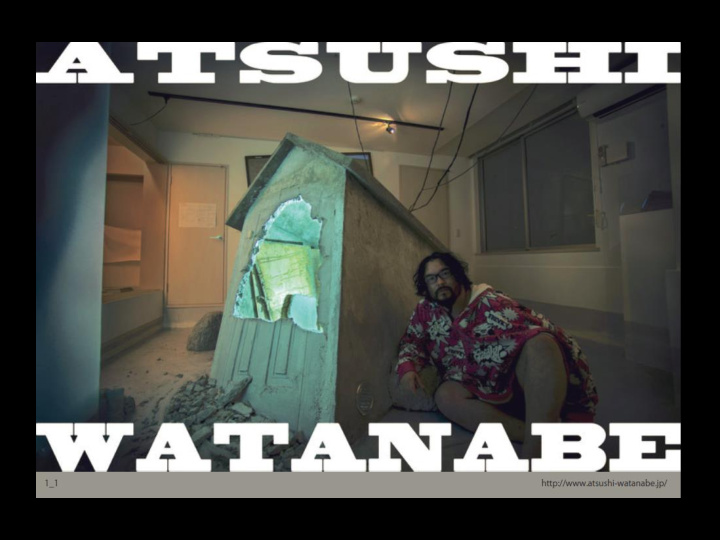



However, on the day when I stopped being hikikomori, it dawned on me that I could change the long time which had passed to “a period of preparation for a necessary role and for the creation of photography works” by photographing myself at that point in my room, and the appearance of the room.
I changed my perceptions in that way, and later re-entered society as an artist. The photos I took then are included in the photography collection.
I think it is certainly possible to turn a time of pain in the heart and distress in life into something of creative value.
The project’s name is “I’m here”, the voice of people who don’t exist. Pains unseen and appeals unheard cannot be ignored.
Main requirements for ‘I’m here project’: ・ An art project consisting of works by actual hikikomori contemporary artists ・ Collect photos of their rooms taken by hikikomori people
・ Posts from people who are not hikikomori not accepted ・ A photography book of those photos was published and an exhibition held
・ The photographs remain anonymous ・ A photography fee of 3,000 yen is paid (as a thank you token) ・ Photos taken by smart phone are accepted (I send a disposable camera to people who don’t have a camera.)
Generally, the rooms of hikikomori people are assumed to be overflowing with junk, but in reality this is only part of the story.
Through showing various types of room, I show that the number of reasons for becoming hikikomori is almost the same as the number of people, and anyone is capable of becoming one of them.
As you look at the photos one by one, you see the state of despair or depression, and the mental state of self- negligence.
Also, from the appearance of the inability to tidy a room, you can glimpse conditions like developmental disabilities due to having a hard life.
In peculiar cases, people use a pet bottle as a toilet, or pile up empty cans of alcohol, and so on.
But a simple and clean room might, for instance, belong to a hikikomori person who grew up in a conservative home, has been suppressed by parents and society,
and suffering from a self-punishing mentality, has remained isolated while studying for a law examination for several years, tidying the room as if obsessed with cleanliness.
There are also hikikomori who are studious and intelligent. Some hikikomori are good readers, and some are interested in religion, philosophy, languages, mathematics, etc.
In some cases, there are many old household items and lifestyle products in the room because the occupants are financially challenged or their consumption activities are limited, and the room looks like a “time capsule”.
This type of room gives you a sense not of the “future” but the “past”. If the length of hikikomori is long, it affects the ambience of the room.
Also, these rooms are spaces of “non - existence” in society.
Rooms can certainly show characters or mental states, but through viewing a group of photographs of rooms, you can see that hikikomori is not a simple existence, and it can’t be generalised, even though there are certain similar tendencies.
At the exhibition to mark the publication of the photography book many hikikomori people who had posted their photos came to the venue. This was unexpected.
In addition, the project brought a considerable amount of attention from the media and through TV and newspapers, and a lot of people who wouldn’t normally have a chance to get acquainted with art also came.
Quite a lot of those were parents who have a hikikomori child.
When setting up the venue for the exhibition, we damaged the walls to make cracks, and created a method of looking at the photographs that was like peeping inside.
This has the intention that viewers will notice their own aggressive natures, and self-criticism will be induced.
Recommend
More recommend